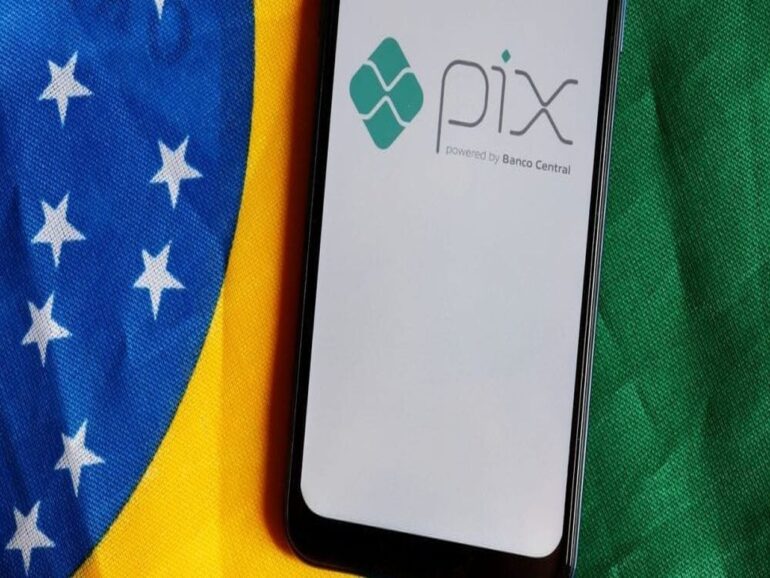When Pix was released three years ago, few could have anticipated the phenomenal success it has achieved since then. Launched with the primary objectives of fostering financial inclusion and instigating healthy competition to enhance financial services in Brazil, Pix has far surpassed initial expectations. Pix has become a global benchmark in instant payments, showcasing Brazil’s prowess in shaping innovative solutions for its financial landscape.
We are projecting that Pix should reach $200 billion in 2026, securing its position as the most widely used payment method by Brazilians, alongside credit cards, both capturing 40% of the digital market. The instant payment service is now the top choice for consumers making their first online purchases. Our data indicates that eight out of ten people completed their initial online transactions using Pix.
Crucial to this success story are Pix’s design features: Transactions settle instantly, in just three seconds on average, providing a significant advantage over traditional payment methods. The absence of transaction size limits set by authorities allows for flexibility, with participants imposing limits based on user risk profiles. Moreover, Pix is cost-effective, with authorities mandating it to be free for individuals and only incurring a minimal cost of 0.33 percent of the transaction amount for merchants.
Pix is so convenient that in only three years, more than 140 million individuals (around 80% of Brazilian adults) and more than 14 million firms are utilizing the system. Brazil is now responsible for 15% of all the instant transactions happening in the whole world. India leads the ranking, but Brazil has had more transactions per capita since Pix was implemented. According to ACI Worldwide, real-time payment transactions had 228.9% YoY (2022 – 2021) growth in Brazil, with 29.2 billion transactions. Considering the top 5 global markets – India, Brazil, China, Thailand and South Korea – it is worth mentioning a key distinction about the Brazilian system: Pix is operated and regulated by the country’s Central Bank.
You can go back almost 20 years to find the first projects focused on modernizing the local retail payments in Brazil. In 2013, the country approved the 12.865 law, establishing regulations for payments institutions and enabling a new wave of financial innovations. Pix is one of the pinnacles of a strategy that deeply involved multiple players in partnership with the Central Bank to bring more access and opportunities for Brazilians. It facilitates transactions for 71.5 million individuals who had not previously engaged in electronic transfers.
This revolution is also bringing incredible opportunities for global companies selling their services and products in Brazil. We are actually seeing that happening around the whole world: alternative payment methods became a preferred option for customers, especially in rising economies. Offering APMs is an effective way to gain consumer’s trust and raise the average order value (AOV). In Latin America, APMs already accounted for 43% of the e-commerce volume in 2023, and are expected to represent 45% of it by the end of 2026.
It is exciting to review Pix’s success story, acknowledging all the innovation that made it possible and projecting its impact in the long term. The Central Bank of Brazil announced that Auto Pix, a new feature for recurring payments, should be available next October. This will reinforce a trend that we have been noticing over the past three years: people are using Pix to pay for products and services. P2B transactions already account for a 34% share. Imagine what will happen when Brazilians could schedule their recurring payments using Pix!
Another interesting evolution for Pix is its adoption for B2B payments. While consumer transactions have seamlessly transitioned to digital platforms, payments between companies remain a largely unexplored frontier. The global B2B digital payments market, estimated at USD 180 billion, is projected to grow by 11% annually through 2027, according to the Capgemini Research Institute. The surge is particularly prominent in emerging markets: Latin America, Asia, and Africa will develop faster, at a 14% annual rate by then, when they are expected to capture 40% of the total global B2B digital payment value by 2027. And despite all this growth, only 30% of those payments are digital. Most companies and entrepreneurs in emerging markets still rely on complex, time-consuming payment methods that take up to 14 days to be confirmed and involve up to six intermediaries. It is time to change that and APM can be the solution.
Innovation in payments comes from rising economies; it is a pleasure to witness the evolution taking place and at the same time, to support this transformation in all the 29 markets where we operate, connecting local customers with the global digital economy and giving people more access to products and services.


